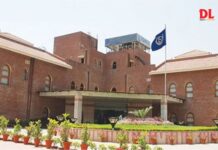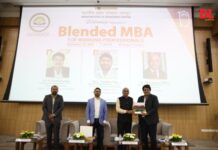“What strikes to be the best approach in vast institutes of higher learning is the top down approach with continuous institutional steering – well blended with the existing -traditional teaching set-up”
All this while being a student and a teacher of Natural Resource Management what appeared an apt management strategy for an optimal resource use, development and sustenance was the grass-root approach or a micro level approach. But in the Digital learning environment (DLE) somewhere it doesn't appear to work more than a pilot. What strikes to be the best approach in vast institutes of higher learning is the top down approach with continuous institutional steering – well blended with the existing -traditional teaching set-up. This paper traverses through the necessary challenges that any traditional institute of well-established repute still faces, if use of ICT in Higher Education is its genuine agenda. Maintaining academics, the pedagogy per se and the transformation of the correct knowledge whereby shifting emphasis, sharing successful practices along with student, teacher and the institutional interactions are discussed.
Global Experience
In recent years, the use of ICT in higher education has increased enormously but with varied levels of scaling from the state of art wireless to the limited use of ICT tools only in creating or developing study without being holistically embedded in the system. What struck is the anomaly even in otherwise state of the art universities, with modern vision albeit maintaining traditional wisdom and also vast sphere of influence. Though, the maximum success stories have been guided by the institutional support including infrastructure and support mechanisms (CRE report 2000, Liber 1998). However, there have been pitfalls too in last few years and many reports and articles have highlighted this while embedding learning technologies across an institution.
Background
The article is based on the experience of the author with digital learning tools in the portals of higher education since 2002, with a first exposure towards it at department of Geo
























